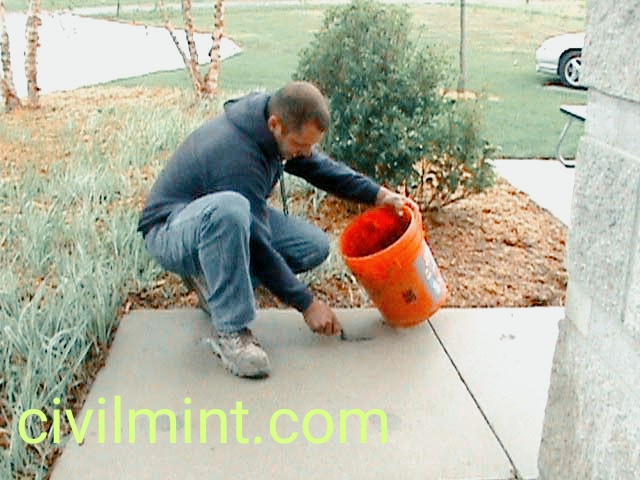Mudjacking is a concrete leveling technique in which material is forced under the surface of submerged concrete and lifted to the intended level.

When dropped on concrete surfaces such as slabs, sidewalks and driveways, they will pump up dirt and dirt and jack them up to provide the necessary support and height.
This article describes the features, mechanics, and applications of the mud-jacking process in construction.
Table of Contents
Characteristics of Mudjacking
Mudjacking, also known as slabjacking or concrete lifting, is an effective technique for repairing set concrete slabs without having to do a complete replacement.
Mudjacking is the act of pumping and lifting mud under a sunken concrete surface. The slurry is forced out of holes near the concrete surface using a hydraulic pump. Holes can be drilled from 1.5″ to 2.5″ in diameter.
The slurry used in this process is a slurry mixture of Portland cement, topsoil, and water.
The mixture is pumped through hoses into holes drilled near the laid concrete surface.
The pumped slurry lifts the surface, fills voids and voids beneath the structure, and hardens to provide solid support.
A mud jack is a temporary height attachment to a submerged concrete surface. It does not solve the structural problems of the surface or improve the durability of the surface.
Madjacking is a good solution for the following scenarios:
- The concrete floor is simply settled and nonetheless structurally sound; that simply wishes to be accelerated to the meant position.
- The patron does now no longer require complete alternative of the concrete floor because of loss of price range or time however wishes to have a higher floor till it’s time for whole alternative.
Benefits of Mudjacking
- Mud jacks are cheaper than replacing entire concrete surfaces.
- The mud used is a mixture of water, earth and cement, so it is an environmentally friendly process.
- Madjacking is a quick process that can be completed within a few hours.
- The process does not require heavy equipment or a large crew.
Limitations
- Mudjacking does not eliminate cracks in concrete surfaces. You can only put the cracks together and eliminate the pitfalls.
- Concrete surfaces covered with tiles or veneers can be damaged during the mudjacking process.
Sum Up
Mudjacking is great for repairing cracked sidewalks, uneven patios, sunken porches, sagging parking lots, and more. Not a repair solution for structurally damaged or collapsed concrete surfaces or structural foundation problems.
